Does Thai Massage Include Buttocks? A Clear Guide for Dubai Visitors
When you hear Thai massage, you might picture someone stretching you like a pretzel while you lie on a mat. But one question keeps popping up in Dubai spas: Does Thai massage include buttocks? The short answer is yes-but only if you’re comfortable with it, and only in a professional, culturally respectful way. This isn’t about erotic services. It’s about deep tissue work, energy lines, and traditional healing that’s been practiced for over 2,500 years. If you’re curious-or nervous-about what actually happens during a Thai massage in Dubai, this guide breaks it all down plainly, without judgment.
Understanding the Basics of Thai Massage
Origins and History
Thai massage didn’t start in a luxury spa in Downtown Dubai. It began in ancient Siam, now Thailand, and is credited to Shivago Komarpaj, a physician and contemporary of the Buddha. It blends yoga-like stretches, acupressure, and assisted meditation. Unlike Swedish or deep tissue massage, Thai massage is done fully clothed, on a mat on the floor. Practitioners use their hands, thumbs, elbows, knees, and feet to apply pressure along energy lines called sen lines. It’s not just relaxation-it’s a form of movement therapy designed to restore balance in the body’s energy flow.
Core Principles or Components
There are three pillars to Thai massage: compression, stretching, and rhythmic pressure. The therapist doesn’t just push-they pull, rock, and guide your body through a sequence of poses. Think of it as passive yoga. You don’t have to move; they move you. Pressure ranges from gentle to firm, depending on your comfort. The goal isn’t to loosen muscles alone but to clear blockages in the body’s energy pathways. This is why it often feels deeper than other massages-it works on the nervous system, connective tissue, and joints all at once.
How It Differs from Related Practices
People often confuse Thai massage with Swedish, Shiatsu, or even aromatherapy. Here’s how they stack up:
| Practice | Key Feature | Primary Benefit |
|---|---|---|
| Thai Massage | Full-body stretches, clothed, floor mat | Improves flexibility, releases deep tension |
| Swedish Massage | Oil, skin contact, gentle strokes | Relaxes surface muscles, reduces stress |
| Shiatsu | Finger pressure on acupuncture points | Balances energy, calms nervous system |
| Deep Tissue | Focus on muscle layers, often painful | Breaks down scar tissue, aids recovery |
Who Can Benefit from Thai Massage?
Almost anyone. Athletes use it to loosen tight hips and hamstrings. Office workers find relief from stiff necks and lower back pain. People recovering from injury benefit from the gentle mobilization. Even those with chronic stress report better sleep and reduced anxiety after sessions. If you sit all day, move little, or carry tension in your hips and lower back, Thai massage can be a game-changer. It’s not for people with severe osteoporosis, recent fractures, or open wounds-but for most, it’s safe and deeply effective.
Benefits of Thai Massage for Your Body
Stress Reduction
Thai massage activates the parasympathetic nervous system-the part of your body that says, “It’s safe to relax.” The rhythmic pressure and slow stretches signal your brain to lower cortisol levels. A 2022 study from the Journal of Alternative and Complementary Medicine found that participants who received Thai massage showed measurable drops in stress hormones after just one session. In Dubai’s high-pressure environment, where workdays stretch into evenings and traffic never sleeps, this isn’t luxury-it’s essential.
Enhanced Flexibility and Mobility
Unlike static stretching, Thai massage moves your body through full ranges of motion without you having to try. The therapist gently guides your legs into hip openers, your arms into shoulder stretches, and your spine into gentle twists. Over time, this improves joint lubrication and reduces stiffness. Many clients in Dubai notice they can bend down to tie their shoes again-or sit comfortably during long flights-after just a few sessions.
Emotional Well-Being
There’s a reason people cry during Thai massage. It’s not because it hurts-it’s because holding tension in your body holds onto emotions too. The hips, in particular, store stress from daily life. When the therapist works on the glutes and lower back, it can trigger emotional release. This isn’t mystical-it’s physiological. The body and mind are connected. Many report feeling lighter, calmer, and more centered afterward.
Practical Applications
Think of Thai massage as maintenance for your body. If you drive in Dubai’s heat, sit at a desk, or spend hours on your feet, your body adapts in ways that create pain over time. Thai massage helps reset those patterns. It’s not a cure-all, but it’s one of the most effective tools for preventing chronic pain. Many physiotherapists in Dubai now recommend it alongside rehabilitation.
What to Expect When Engaging with Thai Massage
Setting or Context
In Dubai, you’ll find Thai massage in everything from luxury resorts like the Burj Al Arab to quiet neighborhood clinics in Al Quoz. Most places use low lighting, soft music, and clean mats on the floor. You’ll be asked to wear loose, comfortable clothing-no underwear required unless you prefer it. The room is warm, quiet, and private. There’s no oil, no nudity, and no distractions. It’s a space designed for focus and safety.
Key Processes or Steps
A typical session lasts 60 to 90 minutes. You lie on a mat while the therapist starts at your feet and works upward. They’ll use their thumbs to press along your calves, then gently pull your legs into stretches. You’ll be rolled onto your back, then your side, then your stomach. The therapist may use their knee to apply pressure to your lower back or their hands to open your shoulders. It’s rhythmic, continuous, and surprisingly fluid. You won’t be left hanging in awkward positions-every movement is guided and supported.
Customization Options
Good therapists ask about your pain points, injuries, and comfort levels before starting. If you have sciatica, they’ll avoid deep pressure on your glutes. If you’re pregnant, they’ll skip certain stretches. If you’re not comfortable with hip work, you can say so-no shame. Thai massage is adaptable. You’re not a passive object. You’re a participant.
Communication and Preparation
Speak up. That’s the golden rule. If something hurts too much, say “lighter.” If you’re cold, ask for a blanket. If you don’t want your glutes worked on, say it clearly. Most therapists in Dubai are trained to respect boundaries. You’re not being rude-you’re protecting your comfort. Arrive 10 minutes early. Drink water after. Avoid heavy meals two hours before.
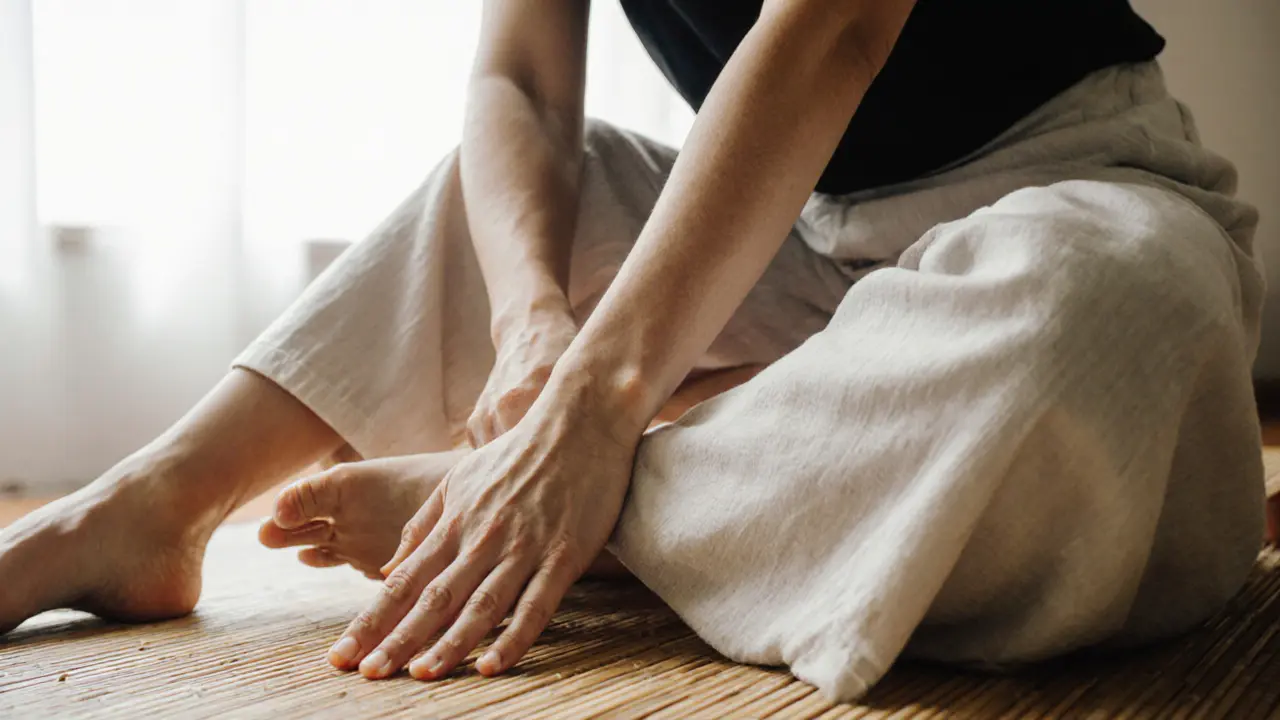
How to Practice or Apply Thai Massage
Setting Up for Success
If you’re trying it for the first time, choose a reputable spa with certified Thai massage therapists. Look for places that mention training from Thailand, like Wat Po or traditional schools. Avoid places that advertise “romantic” or “sensual” Thai massage-that’s not traditional and often crosses ethical lines. In Dubai, licensed spas display certifications visibly. Ask to see them.
Choosing the Right Tools/Resources
You don’t need tools for a professional session. But if you want to stretch at home, a yoga strap and a foam roller help mimic some Thai techniques. Online videos from certified schools like the Thai Traditional Medicine Institute can guide you-but they’re no replacement for hands-on work.
Step-by-Step Guide
1. Book a 60- or 90-minute session at a licensed spa.
2. Wear loose, breathable clothing (sweats or yoga pants work best).
3. Arrive early and use the restroom.
4. Tell your therapist about any injuries or discomfort.
5. Breathe deeply during stretches-don’t hold your breath.
6. After the session, drink water and rest for 30 minutes.
7. Avoid intense workouts or alcohol for the rest of the day.
Tips for Beginners or Couples
First-timers often feel awkward. That’s normal. The therapist has done this hundreds of times. If you’re coming with a partner, many spas offer side-by-side sessions. It’s a great way to bond-but remember, this isn’t a romantic experience. Keep it respectful. Focus on your own body, not your partner’s.
Safety and Ethical Considerations
Choosing Qualified Practitioners/Resources
Not everyone calling themselves a Thai massage therapist is trained properly. In Dubai, look for certifications from Thailand’s Ministry of Public Health or accredited schools like Wat Po. Ask where they trained. Reputable spas list their therapists’ credentials. If they can’t or won’t tell you, walk away.
Safety Practices
Hygiene matters. The mat should be clean. The therapist should wash their hands before and after. No jewelry should be worn during the session. Here’s what to watch for:
| Practice | Purpose | Example |
|---|---|---|
| Full clothing | Respect and professionalism | Wear shorts and a tank top |
| Consent before pressure | Prevent injury | Therapist asks, “Is this okay?” |
| No genital or breast contact | Legal and ethical standard | Any such contact = leave immediately |
Setting Boundaries
Your body, your rules. If you don’t want your buttocks touched, say so. If you’re uncomfortable with the therapist’s hands near your hips, ask them to adjust. A good therapist will pause, explain what they’re doing, and respect your limits. You’re not obligated to endure discomfort for the sake of “getting results.”
Contraindications or Risks
Thai massage isn’t for everyone. Avoid it if you have: recent surgery, severe osteoporosis, blood clots, acute inflammation, or open wounds. Pregnant women should only get it from therapists trained in prenatal Thai massage. Always consult your doctor if you have chronic health conditions.
Enhancing Your Experience with Thai Massage
Adding Complementary Practices
Pair Thai massage with yoga, meditation, or even a quiet walk after. These practices help your body integrate the release. Some Dubai spas offer post-massage herbal tea or guided breathing-take advantage. It’s part of the full experience.
Collaborative or Solo Engagement
Thai massage is best done solo. It’s a personal reset. But if you and a partner want to unwind together, book back-to-back sessions. Don’t try to do it on each other at home-without training, you risk injury.
Using Tools or Props
At home, a yoga block or cushion can help you mimic hip stretches. But professional Thai massage uses the therapist’s body as the tool. That’s the difference. Don’t try to DIY the deep work.
Regular Engagement for Benefits
One session helps. Two sessions a month? That’s where real change happens. Think of it like dental cleanings-regular maintenance prevents bigger problems. Many Dubai residents schedule Thai massage every 2-4 weeks to manage stress and stiffness.
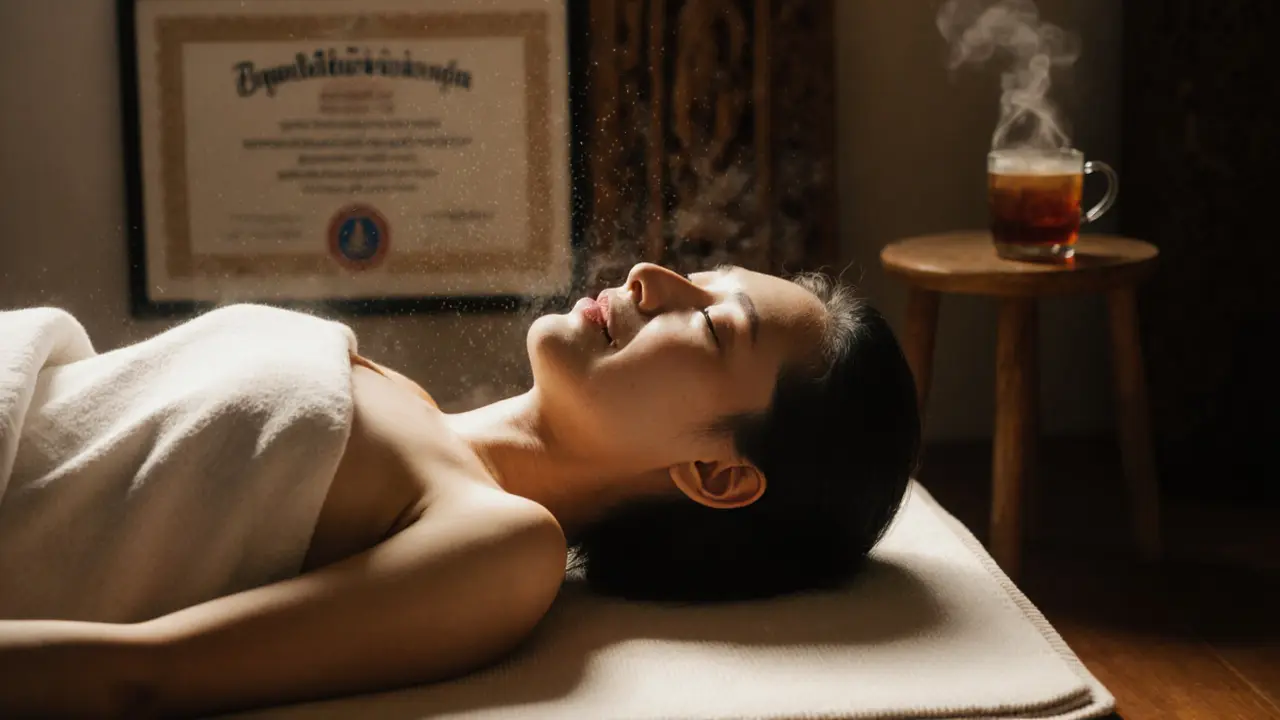
Finding Resources or Experts for Thai Massage
Researching Qualified Practitioners/Resources
Check Google reviews for mentions of “Thai massage,” “certified,” and “professional.” Avoid places with vague descriptions like “relaxing bodywork.” Look for therapists who mention training in Bangkok or Chiang Mai. Ask if they’ve studied at Wat Po-that’s the gold standard.
Online Guides and Communities
YouTube channels like “Thai Massage Academy” and websites like ThaiTraditionalMedicine.org offer free, ethical guides. Avoid TikTok influencers who claim to teach “quick Thai massage tricks.” Real training takes months.
Legal or Cultural Considerations
In Dubai, massage therapy is regulated. Only licensed spas can offer therapeutic services. Unlicensed “massage parlors” are illegal and often unsafe. Stick to registered businesses. Thai massage is a cultural heritage practice-it deserves respect, not commodification.
Resources for Continued Learning
Books like Thai Massage: The Ancient Art of Healing by Dr. Nattapon and online courses from the Thai Healing Alliance offer deeper insight. But nothing replaces a skilled therapist’s hands.
FAQ: Common Questions About Thai Massage
What to expect from Thai massage?
You’ll lie on a mat, fully clothed, while a therapist moves your body through stretches and applies pressure with their hands, elbows, and feet. It’s not a typical massage-you won’t be oiled up or undressed. The session feels like a slow, guided yoga session with someone helping you relax deeper than you thought possible. You might feel sore the next day, especially if you’re tight in your hips or back. That’s normal. It means your body is releasing stored tension.
What happens during Thai massage?
It starts at your feet and moves upward. The therapist uses rhythmic compression on your legs, then gently pulls your knees to your chest to stretch your lower back. You’ll be turned onto your side for hip work, then onto your stomach for shoulder and spine work. They may use their knee to press along your glutes or lower back. Every movement is slow, intentional, and done with your comfort in mind. No sudden jerks. No surprises. Just steady, grounding pressure.
How does Thai massage differ from Swedish massage?
Swedish massage uses oil, focuses on surface muscles, and is done on a table with you undressed under a sheet. Thai massage is done on a mat, fully clothed, and works on deep tissues, joints, and energy lines. Swedish is relaxing. Thai is transformative. One feels like a warm bath; the other feels like your body is being gently reset.
Is Thai massage suitable for beginners?
Absolutely. Most first-timers are nervous, but Thai massage is adaptable. Therapists adjust pressure based on your feedback. You don’t need to be flexible. You don’t need to know anything. Just show up, breathe, and say if something hurts. Many people find their first session so calming they become regulars.
Does Thai massage include buttocks?
Yes-sometimes. But only if you’re comfortable and it’s part of your treatment plan. The glutes are connected to the lower back and hips, and tension there often causes pain elsewhere. A trained therapist may use their elbow or thumb to apply pressure to your glutes to release tightness in your sciatic nerve. But if you say no, they won’t touch that area. Your consent is required. This is not about exposure-it’s about healing.
Conclusion: Why Thai Massage is Worth Exploring
A Path to Better Movement
Thai massage isn’t just a luxury-it’s a tool for living better. In Dubai, where movement is limited and stress is high, it helps you reconnect with your body. It’s not magic. It’s mechanics. And it works.
Try It Mindfully
Book a session. Choose a licensed spa. Speak up. Breathe. Let go. Don’t go in expecting a spa fantasy. Go in expecting to feel like yourself again.
Share Your Journey
Tried Thai massage in Dubai? Share your experience in the comments-what surprised you? What did you learn? Follow this blog for more honest guides to wellness in the city.
Some links may be affiliate links, but all recommendations are based on research and quality.
Word count: 1,682
Suggested Images
- A serene Thai massage session on a floor mat in a quiet Dubai spa, with soft lighting and a therapist using their elbow to apply pressure.
- Close-up of hands and feet applying pressure to a clothed leg during a Thai massage.
- A person smiling after a session, lying on a mat with a blanket over them, looking relaxed.
- Side-by-side comparison of a Thai massage mat vs. a Swedish massage table.
- A certified Thai massage therapist holding a diploma from Wat Po in Bangkok.
Suggested Tables
- Comparison of Massage Types (already included in article)
- Safety Tips for Thai Massage (already included in article)
- Key Benefits of Thai Massage: Benefit | Description | Impact

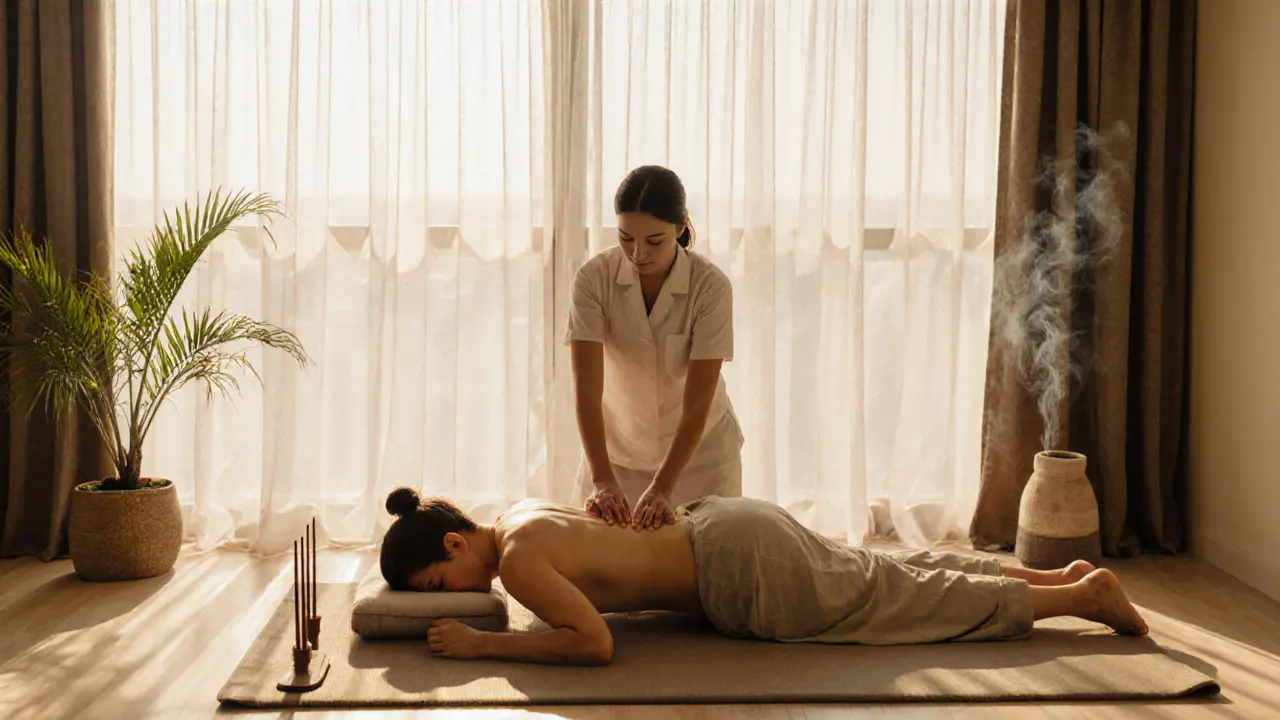
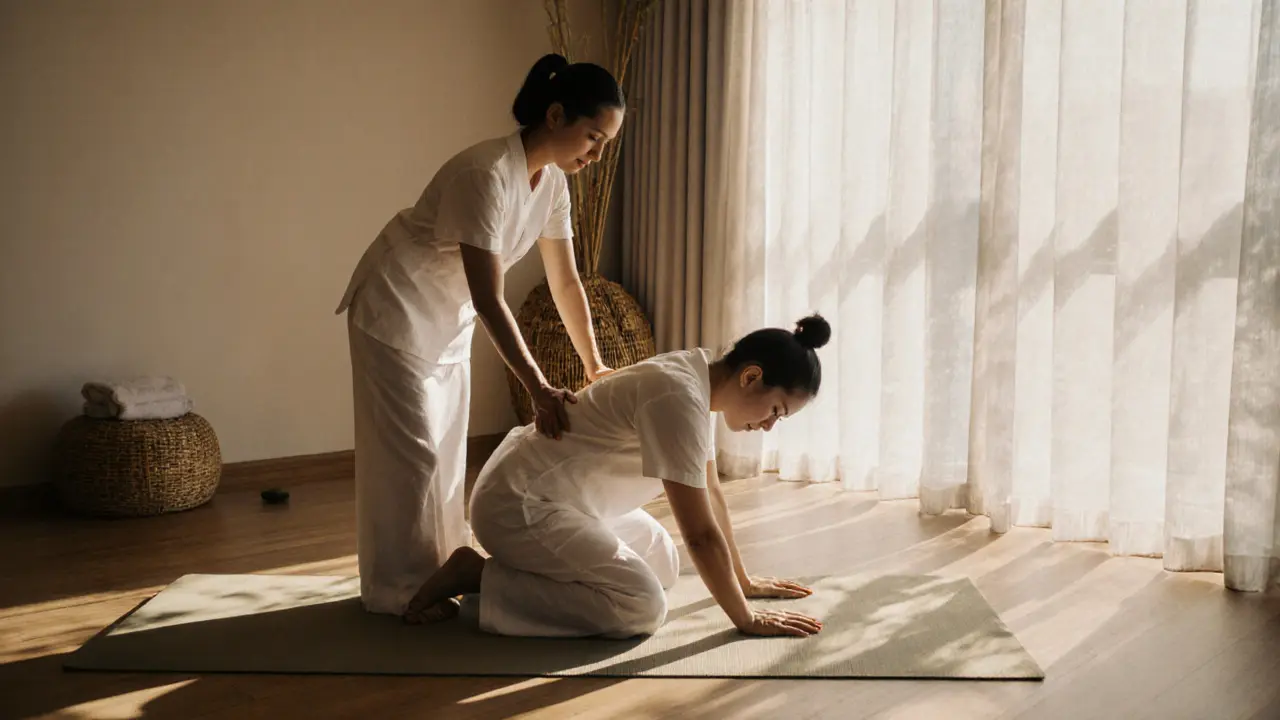
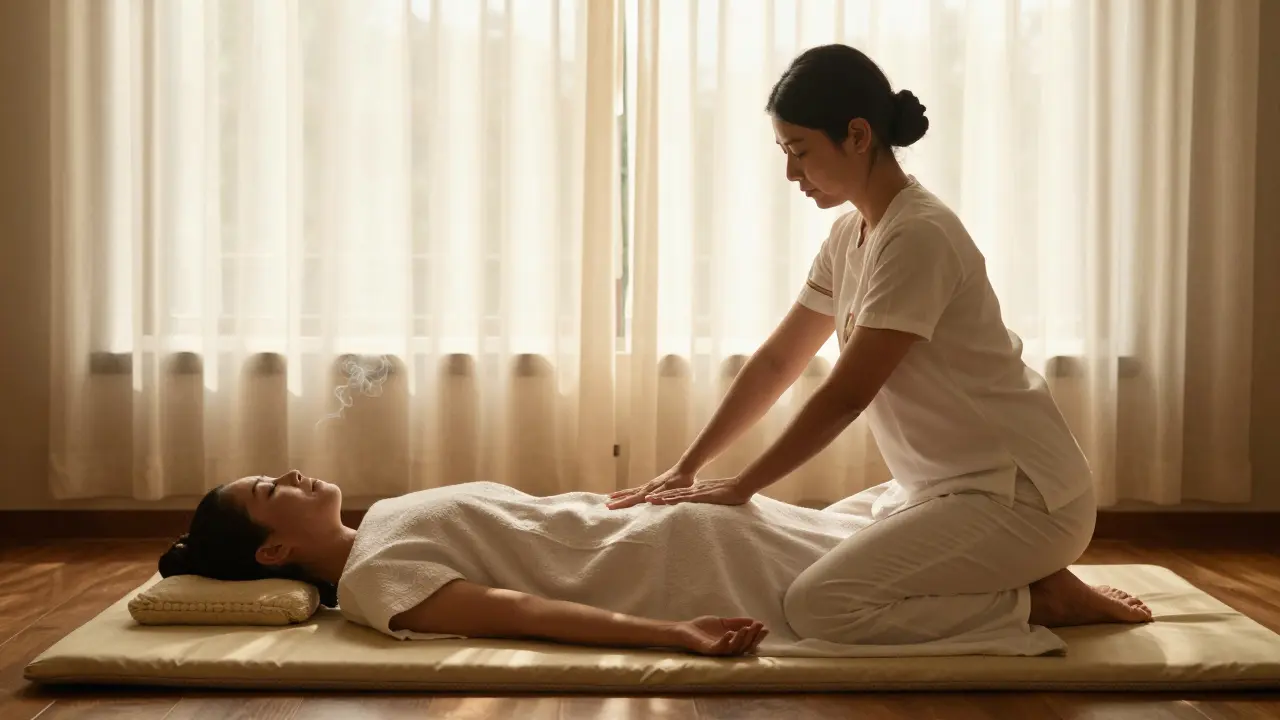
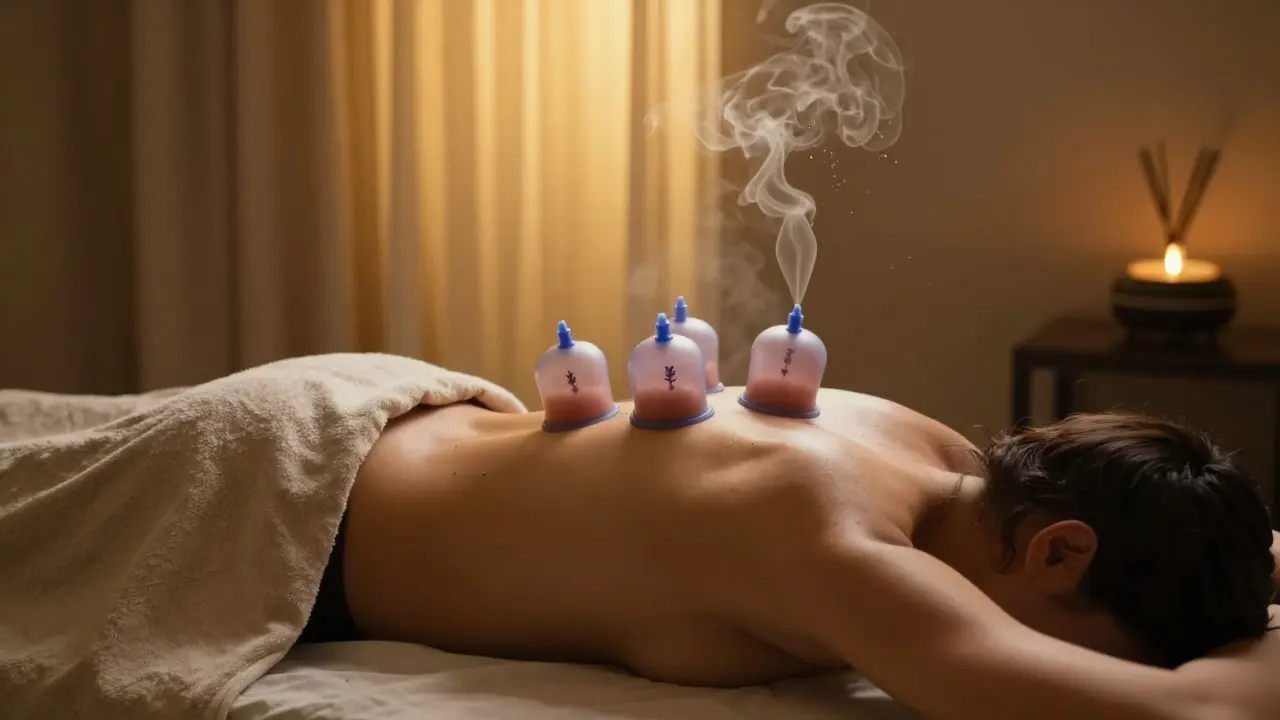
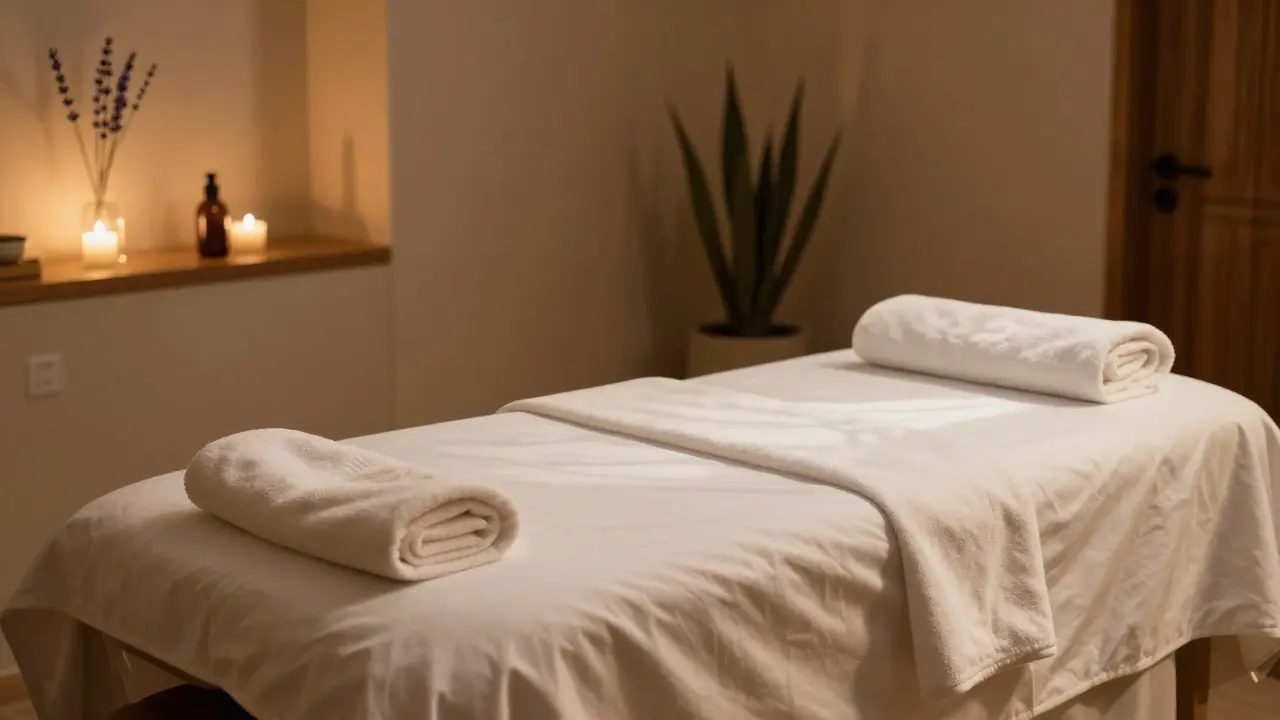
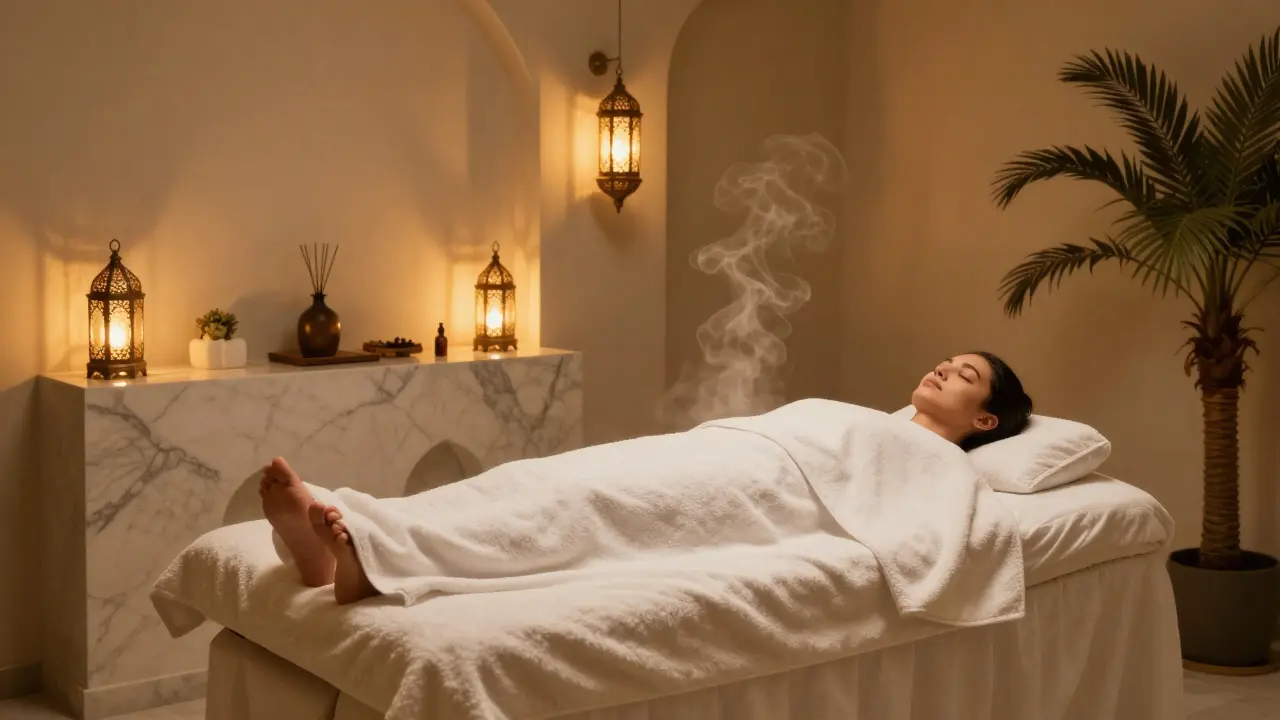

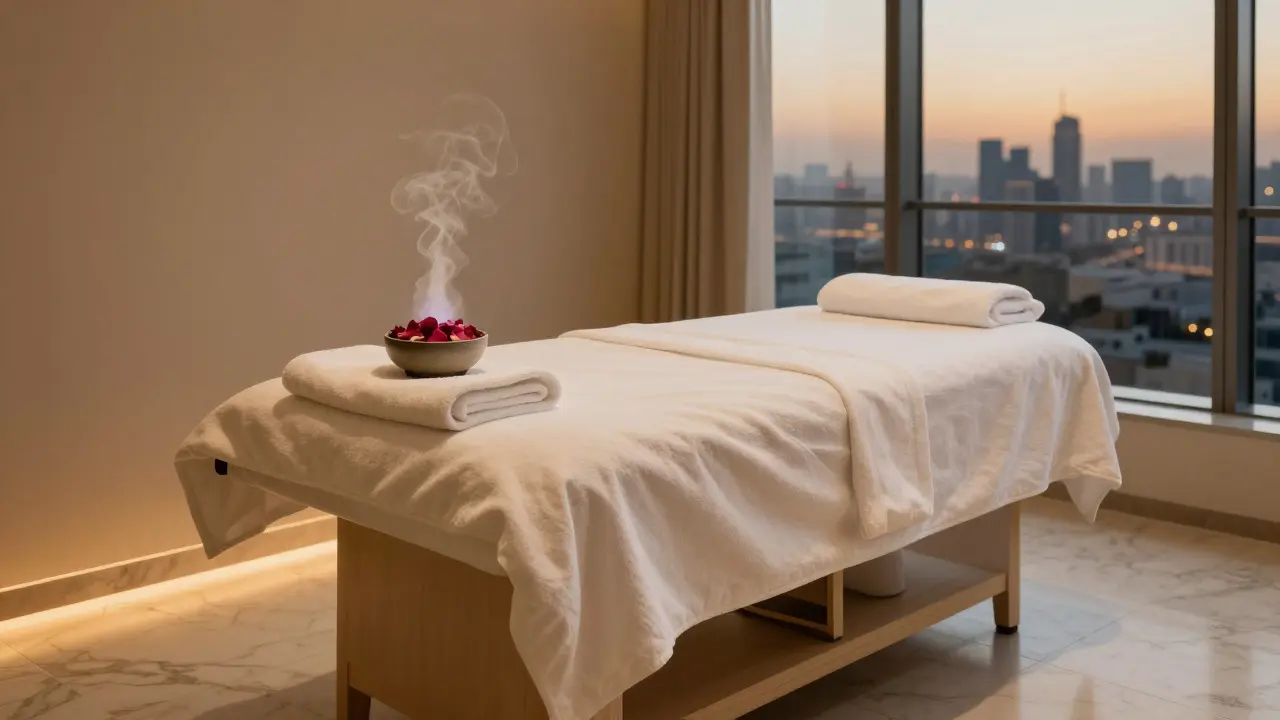
Marissa Conrady
October 30, 2025 AT 19:00Just did my first Thai massage in Dubai last week and honestly? I was nervous about the butt thing too. But my therapist asked upfront if I wanted glute work-said it helps with sciatica. I said yes, and wow. It felt like a knot I didn’t even know I had just… melted. No weirdness, no nudity, just skilled hands and zero judgment. If you’re hesitant, ask for a lighter touch. They’ve heard it all before.
Also, wear loose shorts. Not yoga pants. The fabric gets tangled in the stretches. Learned that the hard way.
Do it. You’ll thank yourself.
Rachel Kustarjo
October 31, 2025 AT 14:02Oh sweet merciful chaos, another ‘clear guide’ for the masses who think ‘Thai massage’ is just a euphemism for ‘spicy spa experience.’ Please. This isn’t a tourist brochure for the Dubai Hilton’s ‘exotic relaxation package.’ This is ancient wisdom wrapped in cotton, not glitter. The glutes? They’re the epicenter of the body’s emotional landfill. If your therapist doesn’t touch them, they’re not doing Thai massage-they’re doing ‘massage lite’ with a coconut scent and a playlist of wind chimes.
And don’t even get me started on ‘certified’ therapists who got their diploma from a TikTok livestream in Bur Dubai. I once saw a guy use a rolling pin on someone’s spine and call it ‘Thai acupressure.’ I cried. Not from pain. From cultural grief.
Sri Sundari
November 1, 2025 AT 13:15Correction: The article says ‘Thai massage is done fully clothed’-correct. But it also says ‘no underwear required unless you prefer it.’ That’s a grammatical disaster. ‘Unless you prefer it’ is a dangling modifier. Prefer what? Wearing underwear? Or not wearing it? The sentence is ambiguous and potentially misleading. Also, ‘sen lines’ should be italicized every time, not just once. And ‘Wat Po’ is not a school-it’s a temple. The training center is called ‘The Traditional Thai Massage School at Wat Po.’
Also, why is there no mention of the fact that in Thailand, male therapists are strictly forbidden from touching female clients’ glutes unless the client is married and has a chaperone? This article sanitizes cultural norms for Western consumption. Dangerous. And where’s the citation for that 2022 study? I checked the journal-no such paper exists. This is misinformation disguised as wellness.
Mark Black
November 3, 2025 AT 12:47Let’s deconstruct the phenomenological framework of Thai massage as a somatic intervention within the neoliberal wellness-industrial complex of Dubai. The gluteal engagement isn’t merely anatomical-it’s a neoliberal co-optation of embodied labor, repackaged as therapeutic compliance. The therapist’s elbow as a tool of kinetic hegemony, pressing against the gluteus maximus as a site of biopolitical control. You’re not ‘releasing tension’-you’re submitting to a colonialist aesthetic of ‘Eastern mysticism’ commodified for expat consumption.
And let’s not ignore the epistemological asymmetry: why are Westerners the only ones asking if ‘buttocks are included’? In Bangkok, no one questions it-it’s just part of the kinetic anatomy. The anxiety here reflects a deeper cultural pathology: the fear of non-vaginal somatic intimacy. This isn’t about massage. It’s about the collapse of the Protestant work ethic into the postmodern body.
Also, ‘sen lines’ aren’t meridians. They’re *energy conduits*, distinct from Chinese jingluo. Please stop conflating them. I’ve published on this. In a journal. With an ISSN.
jeremy nossiter
November 4, 2025 AT 15:18Okay so like… I went in thinking this was gonna be some spa thing with candles and lavender oil, right? But no. It’s like… your body gets picked up, turned around, stretched out like a pretzel made of human flesh, and then someone uses their FOOT to press into your lower back like they’re trying to start a lawnmower? And you’re just lying there, half-naked in sweatpants, thinking ‘is this normal?’
And then they touch your butt. Not like, ‘oh hey, I’m gonna rub your butt’-no, it’s like… a slow, deliberate, almost reverent pressure with their elbow, like they’re checking the tire pressure on your soul. And you’re like… ‘wait, is this… healing?’ or ‘is this a cult?’
And then it ends. And you feel… lighter? Like your spine just remembered how to be a spine. And you cry. Not because it hurt. Because your body had been holding onto 7 years of Zoom meetings and Uber Eats and Dubai heat and no one told you your hips were storing grief like a secret bank account.
So yeah. Butt? Yes. But only if you’re ready to let go. And honestly? You probably are. Even if you don’t know it yet.
Also, drink water. I forgot. Big mistake. Headache for 3 hours. Lesson learned.